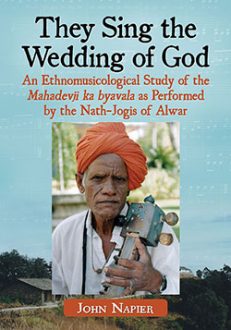They Sing the Wedding of God
An Ethnomusicological Study of the Mahadevji ka byavala as Performed by the Nath-Jogis of Alwar
$55.00
In stock
About the Book
In Rajasthan, India, a caste of musicians and mendicants, the Nath-Jogis, sing stories of kings who renounce their thrones to become wandering mendicants. They also sing of a god, Mahadeva, Shiva, who must abandon his world-renouncing life and marry, thus establishing the very caste that tells his story. This is the first detailed ethnomusicological study of the music of this caste, examining how the existential questions of the sung stories—of the conflict between loyalty to families or communities and the transcending desire to renounce the material world—are articulated in musical performances in which the caste’s own ethnography is inscribed.
Discussing the relationship between the performed repertoire and the caste’s identity, the contexts of performance and ways in which familiar stories are effectively retold, the book offers a transcription, translation and musical and ethnographic analysis of one performance, by Kishori Nath, and shows how the questions the performances project are not merely speculative acts of self-identification but also challenges to audiences to consider their own responses.
About the Author(s)
Bibliographic Details
John Napier
Format: softcover (7 x 10)
Pages: 352
Bibliographic Info: 153 photos, glossary, appendices, notes, bibliography, index
Copyright Date: 2013
pISBN: 978-0-7864-7140-9
eISBN: 978-1-4766-0213-4
Imprint: McFarland
Table of Contents
Table of Contents
Acknowledgments vii
A Note on Transliteration viii
Preface 1
Introduction 3
One : Tonight You Will Hear the Wedding of God 9
Two : The Many Voices of the Jogi 24
Three : Singing the Wedding of God 39
Four : Why a God Should Marry 67
Five : A (Mis)Guided Search 136
Six : The Wedding 211
Seven : An Exceptional Performance, and a Contract with Tradition 267
Eight : Parvati Rebound? 279
Nine : Orientations, Mediations, Directions 293
Glossary 301
Appendix A—List of Performances and Recordings 303
Appendix B—Episodic Structure 305
Appendix C—Transcription of Thik 2 309
Appendix D—Repeated Melodies, Introduction of New Melodies, etc. 313
Appendix E—Single Melodies and Voicing 316
Appendix F—Doha and Voicing 318
Chapter Notes 323
Bibliography 337
Index 341





